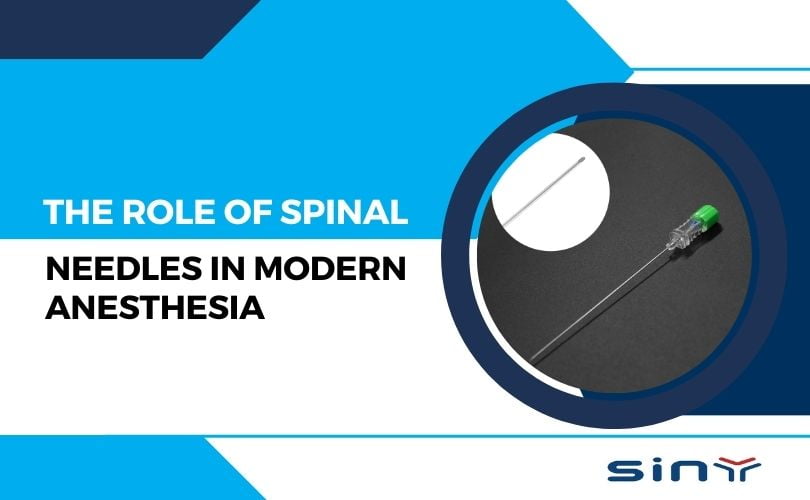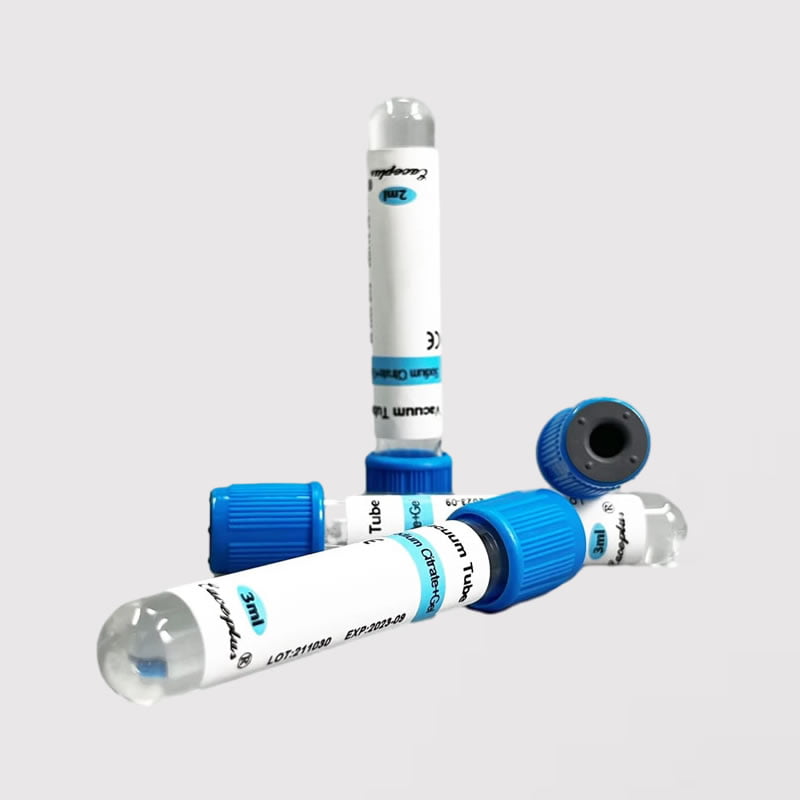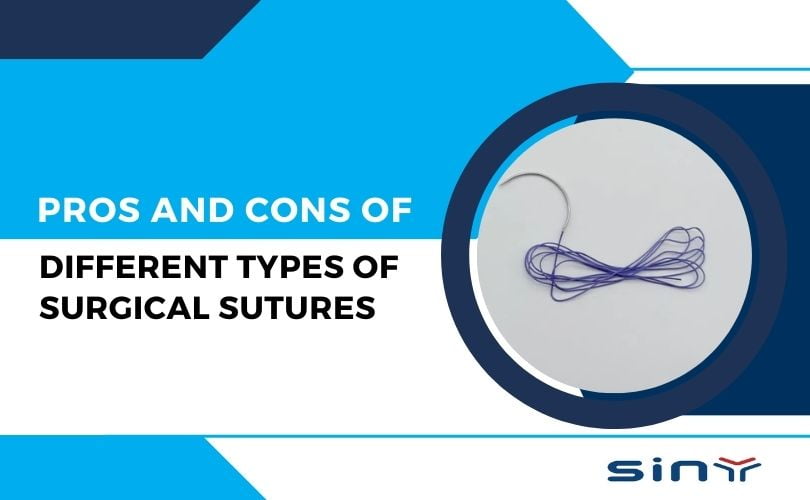A spinal needle is a needle that can be used to administer analgesics or anesthetics directly into the cerebrospinal fluid. Anesthetics block impulses transmitted along the nerves they contact.
Surgical procedures involving the lower limbs, heart disease, liver disease, total hip replacements, total knee replacements, hysterectomy, cesarean sections, hernias, renal failure, and obstetric anesthesia are all indications of spinal anesthesia.
Table of Contents
What are spinal needles?
A spinal needle accesses the subarachnoid space in the spinal cord. Healthcare professionals typically use them to administer spinal anesthesia, inject medications, or collect cerebrospinal fluid samples. Their design features sharp angles and long, thin bodies to minimize tissue damage and maximize accuracy.

Various sizes and shapes of precision needles are available to accommodate different procedures and patient needs. In the typical color-coding scheme, manufacturers assign colors to gauge sizes based on their numerical value, indicating larger gauge sizes with lower numbers.
Type Spinal Needle
Pencil-Point Spinal Needle
In spinal anesthesia, healthcare providers use the pencil-point spinal needle, a specialized type specifically designed for the procedure. Its unique design allows for a smoother insertion and reduces the risk of complications such as nerve damage or spinal headaches. The introducer puncture needle creates a small opening in the skin for the spinal needle to pass through, ensuring a precise and controlled insertion.
A pencil-point needle has a closed tip with a hole near the tip, shaped like a pencil. The pencil point reduces the possibility of post-dural puncture headaches by minimizing cerebrospinal fluid leakage after a puncture.
Quincke Point Spinal Needle
The Quincke Point Spinal Needle has a different design and mechanism. The Quincke Point needle features a beveled tip that allows cerebrospinal fluid collection during the procedure, which can be useful for diagnostic purposes.
Surgical procedures are performed using Quincke Point Spinal Needles, which are made from medical-grade steel alloys. It has a seamless finish and pointed end and is easy to insert and remove.
- Spinal needles perform anesthesia of the spinal canal or conduct diagnostic punctures of the spinal canal.
- Quincke tip with double bevel allows atraumatic puncture of the dura and minimizes post-spinal headaches.
- The use of a steel spinal needle with a thin-walled cannula and smooth needle surface facilitates atraumatic punctures.
- A transparent needle hub with a magnifying effect allows quick detection of cerebrospinal fluid backflow and precise needle tip positioning.
- The needle hub is designed for ease of manipulation
- The color-coding of the mandrel grip is based on needle size
- You can purchase spinal needles with short guide needles, which enable puncturing dense tissue and inserting in a specific direction.
- (Safety tested) Medical-grade materials
- Latex is not present in spinal needles
- High-quality steel needles
How should Spinal Needles be used?
Healthcare providers should determine the size of a spinal needle based on the patient’s age, weight, and overall health. They should insert the needle slowly and carefully, using a sterile technique and maintaining proper hand hygiene. Once the needle is in place, they should remove the stylet to allow for the collection of cerebrospinal fluid or the injection of medication, if needed.
Technical Parameters: Spinal Needle
| Type | Size | Color Code | Length(mm) |
| Quincke Point | 20G | Yellow | 50-150mm |
| 21G | Green | ||
| 22G | Black | ||
| 23G | Blue | ||
| 24G | Dark Purple | ||
| 25G | Orange | ||
| 26G | Brown | ||
| 27G | Grey | ||
| Pencil Point | 22G | Black | |
| 23G | Blue | ||
| 24G | Dark Purple | ||
| 25G | Orange |
Healthcare facilities should follow medical waste management protocols for disposing of spinal needles. Dispose of used spinal needles by placing them in a puncture-resistant sharps container immediately after use.
Advantages of Spinal Needles
Spinal anesthesia offers several advantages over alternative methods of anesthesia, making it a preferred choice for many surgical procedures. One significant advantage of spinal anesthesia is its minimally invasive nature. Consequently, this reduction diminishes the risk of complications associated with general anesthesia, such as postoperative nausea and vomiting (PONV) and respiratory depression.
Additionally, spinal needles facilitate the precise delivery of anesthesia directly to the target site, ensuring effective pain relief with minimal systemic effects. This targeted approach can result in faster recovery times and improved postoperative outcomes for spinal anesthesia patients.
Spinal Needles Features
- Highly suitable for spinal anesthesia lumbar puncture.
- Its conical needle tip provides effortless puncture and reduces post-spinal headaches.
- The lateral outlet opening facilitates anesthetic introduction at a 45° angle.
- A transparent base offers an easy check for reflux of spinal fluid.
- The ergonomically designed needle hub facilitates easy adjustment.
- A specially designed needle with a lateral opening and fitted mandrel precludes the biopsy effect during puncture, making the pencil point superior to others.
- Manufactured from optimum-quality steel material, with a thin-walled cannula
- A color-coded grip according to needle size as per international standards for easy identification.
Why are we a Trusted Spinal Needle Manufacturer?
Sinymedical spinal needles are designed with patient comfort, safety, and ease of use in mind. We manufacture our brand products in ISO- and CE-certified facilities. We ensure the quality of our partners’ products through rigorous quality control measures.
Over 65 markets worldwide receive our products from distributors, hospitals, pharmacies, NGOs, and government institutions.
Final Thoughts
We are a professional manufacturer of spinal tap needles, Quincke spinal needles, spinal block needles, and 20-27 gauge spinal needles. We focused on international export product development, production, and sales. We have improved the quality control processes of the spinal needle to ensure each export-qualified product.
Our production plants undergo regular inspections to ensure compliance with safety, health, and environmental standards and ISO and CE regulations. The medical community relies on us to manufacture high-quality precision needles.
FAQs
What are spinal needles?
Spinal needles are specialized medical devices for accessing the subarachnoid space within the spinal canal. They are hollow needles with a sharp, tapered tip and a thin, cylindrical shaft.
What is a 25G spinal needle used for?
A 25-gauge (25G) spinal needle, characterized by its gauge size determining the diameter of the needle shaft, delivers precise anesthesia with minimal tissue trauma.
How long is a spinal needle?
The length of a spinal needle can vary depending on the specific design and intended use. Spinal needles typically range from approximately 3 to 5 inches (7.5 to 12.5 centimeters).
How do spinal nipples work?
Spinal needles work by providing access to the subarachnoid space within the spinal canal, where they deliver anesthesia medication directly into the cerebrospinal fluid surrounding the spinal cord and nerve roots.

























































